Game Development
Indie Retro Homebrew Showcase Interview: Nyghtmare: The Ninth King
Welcome to the fifth installment of our Indie Retro Homebrew Showcase Interview series! In this edition, we had the pleasure of interviewing Elvies, the mastermind behind the thrilling platformer game Nyghtmare: The Ninth King.
Prepare your weapons as we explore into the creation process and unearth their captivating stories from the shadows! Read our interview below to discover the secrets lurking in the darkness!
How was your game born?
When I was 5 years old, my first handheld was the original Game Boy, so my love for nostalgic retro games goes way back. I would say the inspiration for Nyghtmare the Ninth King is obviously Castlevania, specifically Legends for the Game Boy, with a little bit of Mega Man in there.
I came up with the idea when COVID is just getting media attention, we all had our "extended" vacations, and what better thing to do than make the most of the extra time we had?

What was development like?
Development started in 2019 with papers and imaginations. I envision a world similar to our "predicament" at that time, where every moment was a standstill. There were so many games made from the same concept and idea but rooted in the ground. I imagine mine in a dark gothic world where medicine practice was rather new.
Using GB Studio was my first choice of engine since I didn't know how to use assembly or any coding language. It was mainly a top-down game engine, and at that time platformers were not yet implemented, so I came up with experimental builds using "tricks and fakeouts" to simulate gravity.
Developing games on your own is daunting at first, but eventually the GB Studio community warmed up, and they were very helpful in the process, so I am forever grateful to all the people who helped me.
What did you learn about yourself through this game?
I absolutely still love the gameboy, and my inner child isn't dead. Joking aside, I have learned that game development is hard; if you want to do it full-time, you have to commit. Getting things done alone is not always a good idea. What's better is to have people that can help you with your journey, no matter the size of your game or your reputation as a gamedev.
What makes this game special?
As I said, I adore the Game Boy and the Castlevania series, and this game is proof of that. The game has given me new nostalgia in a way that modern AAA games don't capture anymore. Call me a boomer, but I think that retro games have more passion and imagination to them; the limitation is what makes them unique; they spark creativity, and if a game can make you feel like a child again, then I think that that game did a good job. Also, it has a cat that you can pet. How many games let you do that? XD
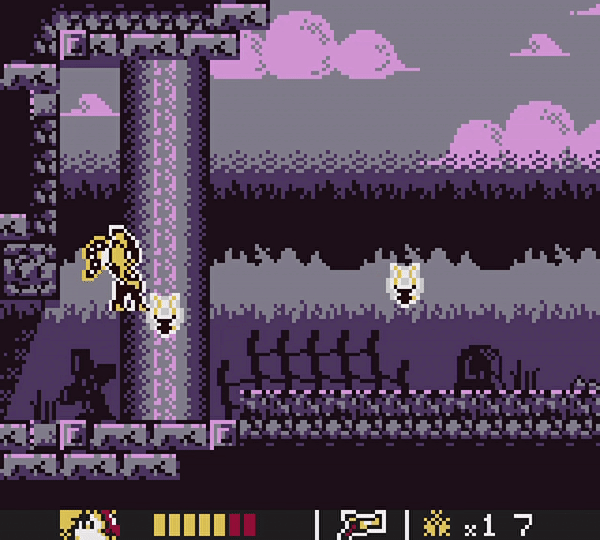
How does sound play a role in the game?
I am neither a sound designer nor an expert, but I think Coffe "Valen" Bat, the sound designer who helped me with this project, did a good job recreating them with Game Boy's limitations in mind. The main weapon is a whip, similar to most Castlevania-likes, so having a twhip!" sound with just 4 channels to use from is awesome to me. You can tell when an attack is coming and when an enemy is mocking you with their sound design.
What games influenced this one the most?
There were four titles that inspired me in the making of Nyghtmare the Ninth King. These are Castlevania series, mainly Legends, for the spritework and overall design. Mega Man for the gameplay and boss interactions. Bloodborne for the story and dialogue, and the Bloodstained Curse of the Moon series for the sprite work.
Any fun stories or wild moments during development?
At one point, this game was going to be a cavestory rip-off with a Lovecraftian world design where the main character is a monster trying to find a way to become human. There were two rooms to explore before scraping it all. The Lovecraftian themes stuck, though.
Do you think preserving older gameplay mechanics in new games is important?
Yes, like in this game, the harder platforming segments with "Uinfair: Enemy Placements were an old tradition, especially for Game Boy titles, but I did so by modernizing the physics a bit, easing the air control, and having more coyote times that they used to have so players didn't have to rely on pixel-perfect jumps every time and blaming the game for its bad design. So in general, it is important to look in the past mistakes but do not repeat them, instead we innovate and adapt
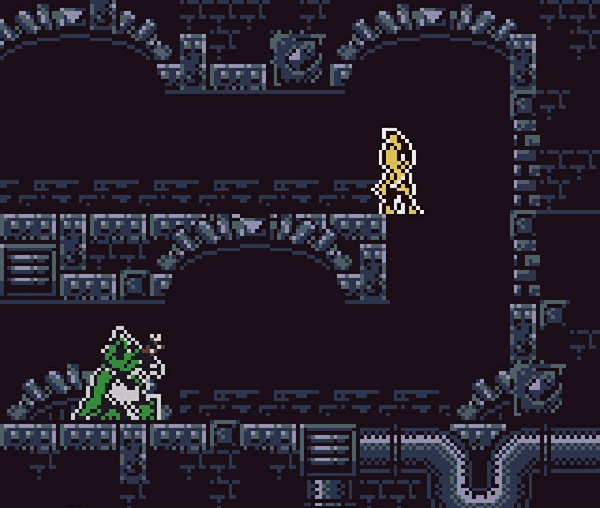
What's your favorite memory as a gamer?
every aspect of the older games, where if we bought a game, we got the whole game and we owned it. where we can play all night with our friends and sleep over on weekends and after school.
Who will enjoy this game the most?
I think fans of Castlevania who have been starved of content for a long time and collectors of retro games will enjoy it.
Bottom line, why must someone play this game?
I think that if you want to try this game out of curiosity, then by all means please do. I am not the authority on what games to play and not to play; it's just a matter of whether you want to enjoy a relaxed time and quality time for yourself playing video games, then do it at your own volition. No one should be allowed to tell others what to do.
But play this game; it's good. It's a Casltevania-like game that has a petting mechanism in it, great boss fights, and you get to play as a cute girl and a cool knight! It's two stories interwoven into one, so it's two games in one.

How do you want this game to be remembered?
For its cool boss fights and its soulsian story telling? But really, if you remember this game as a game that is good, then thats all that matters
What's next?
I am currently developing Nyghtmare 2 for the Game Boy, and the game will be a pseudo-Metroivania set years before the first game and will have traditional mechanics, simply to say that it's harder than the first. It is set to release in 2024–25, so please look forward to it.
Anything else you'd like to add?
Well, thank you for taking your time to check out Nyghtmare the Ninth King for the GameBoy Color! It is my pleasure to be of service to retro game enthusiasts all over the world. I can finally say to my late mom that I made it! Learn from the past, look forward to the future, but always live in the moment.
--
Follow Elvies on X and check out Nyghtmare: The Ninth King here!
Indie Retro Homebrew Showcase Interview: Fire and Rescue
Welcome to the fourth edition of our Indie Retro Homebrew Showcase Interview series, where we explore the world of indie games. Today, we turn our spotlight on Fire and Rescue, an action platformer crafted by Skyboy Games!
Get ready to wield your hose and dive into the blazing depths as we explore the fiery tales and the journey behind the game's development. Join us as we uncover the insights from our interview below!
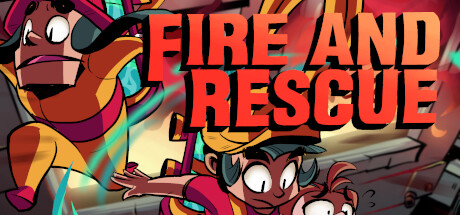
How was your game born?
In a way, Fire and Rescue was born on a whim. It all started a few years ago when I joined a game jam themed around “Lost Cartridge” game design. Designing games that felt like they could be a newly discovered retro game. For that jam, I decided to try learning some nesdev over that weekend and creating a game. This game became Orphea, a super-short, rudimentary NES shooter.
What surprised me, however, was how much I enjoyed nesdev. So, I decided I wanted to make a complete NES game. This was the start of Fire and Rescue as a project. I wanted to create a complete NES game that felt like it was an authentic black-box NROM release.
What was development like?
I find doing nesdev to be quite refreshing. I write my games in mostly C based largely on what I learned from nesdoug.com. Writing C code for nesdev lets me be unabashed about breaking the rules of “good” or “clean” code and just do what works. For someone who has spent many, many years methodically writing “robust,” “correct” code, the rough-and-tumble, whatever-works nature of nesdev is like a breath of fresh air.
I also like the constraints inherent in nesdev. I often refer to the compiler as the best producer I ever worked with. When working on games, it’s inevitable that you want to add more and more to the game. If you don’t have any constraints, this can go on forever. In nesdev, if I write to much code, the compiler complains and refuses to write anymore. It basically tells me that I can’t add new stuff to the game unless I take something else out (or, at least, optimize more.) These sorts of limitations go a long way towards helping me actually finishing projects.
What did you learn about yourself through this game?
I’ve learned that I like constraints in my design space, a lot. I guess it turns out that I was a game design submissive! Having constraints (like palette and sprite limitations) set the boundaries for what I can do and then figuring out how to best work within (or around) those boundaries is super enjoyable.
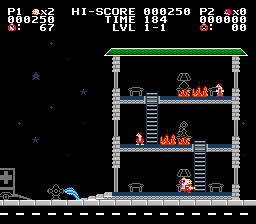
What makes this game special?
My main goal with Fire and Rescue was to make a game that felt authentically Black Box retro as I could. In my mind, I wanted to make a game that could have conceivably be released alongside the other Black Box original NES releases. That’s part of what led me to the fire-fighter theme. I looked at the set of Black Box releases and tried to find a theme that might have been picked for a game that was part of that lineup.
One of the nicest compliments I got for Fire and Rescue was when someone played it and said that, if not for the copyright year on the title screen, if someone had told them Fire and Rescue was an obscure Black Box game that they just hadn’t known about, they would have been convinced. That felt pretty darn good!
How does sound play a role in the game?
Sound is crucial for giving players feedback that is time critical. In Fire and Rescue’s case, sounds the refill sound when filling water let the player know exactly when their water tank is full and that they can keep moving (which is important when trying to optimize for time in the game.)
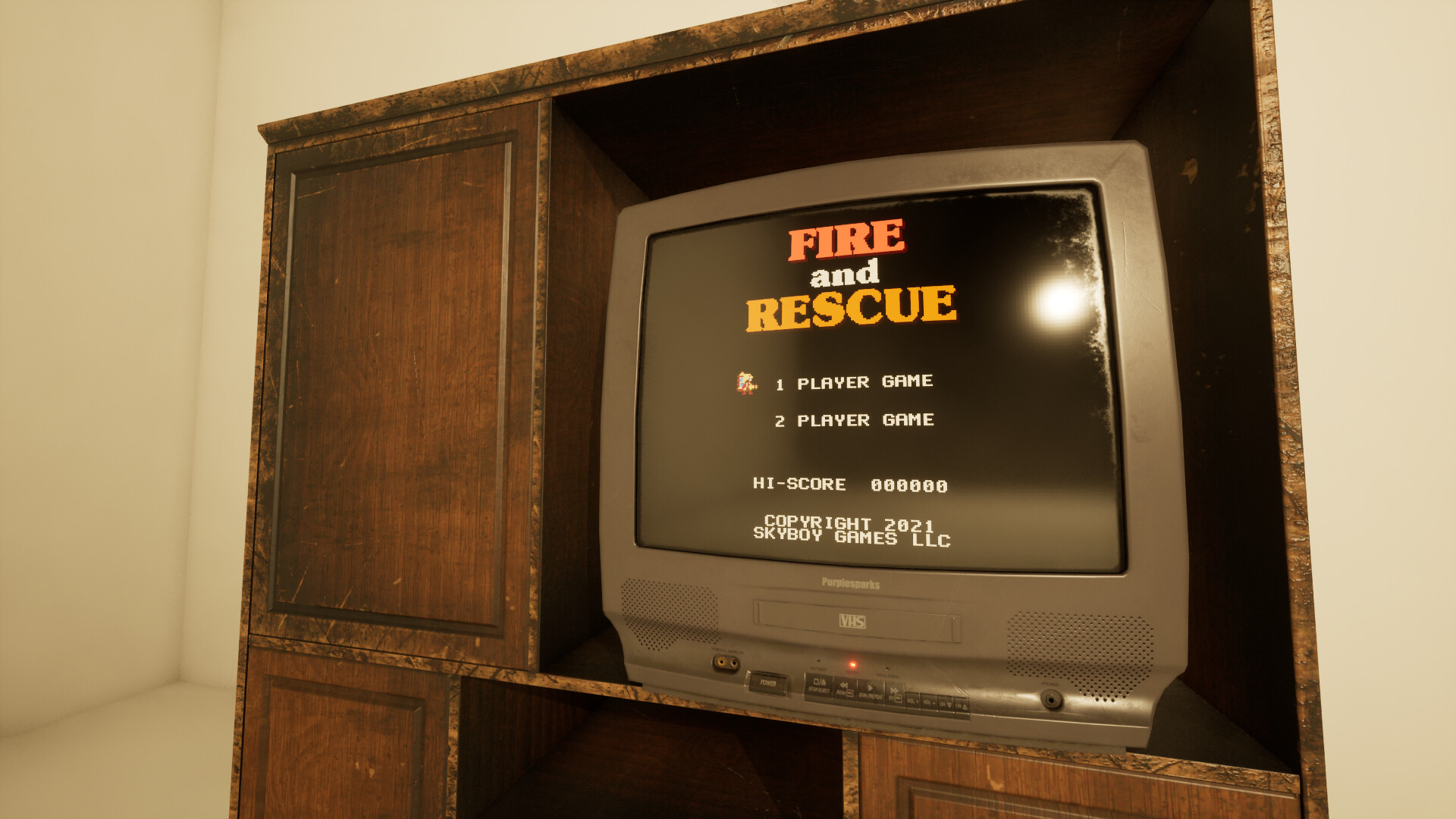
More generally, the limited number of sound channels on the NES forced me to think about the sound and music as a more coherent whole. Playing a sound effect that uses certain channels would cause those channels to no longer be available for the background music, so I found myself thinking about the sound effects as being part of a harmony that is assigned to certain channels that are designed to mesh with the game’s music.
What games influenced this one the most?
It might not be apparent at first, but I thought a lot about Balloon Fight while working on Fire and Rescue. When I got an NES as a kid, my first to games were SMB and Balloon Fight, so I played A LOT of that game back in the day. In a way, Fire and Rescue is me wanting to make a game that stands as a sibling with Balloon Fight.
Any fun stories or wild moments during development?
While I was working on Fire and Rescue, I spent a lot of time imagining myself as being a dev in Japan in the eighties. When I was looking up references and feeling out the gameplay, I would frequently ask myself, what would I be referencing if I were a dev in 1982 or 1983 (years when games like Balloon Fight might have been written)?
In many ways, it was kind of like I was larping being a game dev in the 80’s. I even had some points were I steered away from certain elements because they felt “too modern”. Like they wouldn’t have been commonly used when a game like Fire and Rescue was being developed (if it were developed in 1982.) For example, earlier in Fire and Rescue’s development, you could grab onto ladders mid-jump. I then got the feeling that grabbing ladders mid-jump felt like a nicety that wouldn’t have been common place in games developed at that time, so I took it out.
Do you think preserving older gameplay mechanics in new games is important?
In general, yes, but it does depend on context. Older gameplay mechanics, in and of themselves, aren’t necessarily required to be preserved in new games. Sometimes we move on from certain mechanics for a reason. But, if you have something to say with those mechanics, then heck yeah! The language of game design should draw from the full history of games. Old and new.
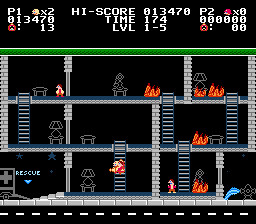
What's your favorite memory as a gamer?
I’m telling on myself a bit here, but I used to sniff my Christmas presents as a kid. I swore that I could smell exactly which presents were video games. I was usually right. 😉
Incidentally, a great compliment I got from someone for the physical version of Fire and Rescue was that it smelled like an original NES game when they opened it. That compliment really hit me where I live.
Who will enjoy this game the most?
Nostalgic old farts like me and speed-runners who like to optimize their path through levels.
Bottom line, why must someone play this game?
If you want to feel like you’re playing an NES for the first time all over again, then Fire and Rescue is the game for you.
How do you want this game to be remembered?
I want Fire and Rescue to be remembered as a great start for a catalog of really cool indie retro games created by Skyboy Games.
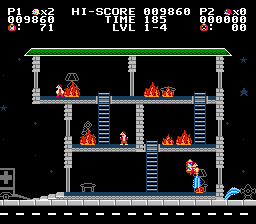
What's next?
Well, my second NES game, Gunhawk, is done and available for download and purchase. If you’re at MAGFest, it right there in the MIVS It is a game where you control a mech fighting off waves of enemies using an NES Zapper. If you’ve been looking for a new reason to play with a light gun, check it out!
I’ve also just started on my third NES project: a Dragon Quest-style RPG called Even Goblins Fall in Love. It’s still super early in development, but if you want to know more, check out my mailing list (on skyboygames.com) or follow me on the usual social media suspects (Twitter, Mastodon, Instagram).
Anything else you'd like to add?
Thank you for letting me be a part of Indie Retro. I really love the efforts you’re making to make more people aware of homebrew games. I think a lot of gamers may be vaguely aware of homebrew games, but don’t realize how much they enjoy them until they see and touch them first-hand. Something about taking a cartridge, plugging it into a beloved console, and seeing a game they’ve never seen before really speaks to some people on a visceral level. Exposing new people indie retro / homebrew games gives them a chance to see a whole world they might never have known existed.
Indie Retro Homebrew Showcase Interview: Find the rhythm with Oratorio!
For our third feature of our Indie Retro Homebrew Showcase Interview series, we interviewed the maestro behind the rhythm and action game Oratorio, John Vanderhoef!
Get your tempos and shooters ready as we uncover the stories as he was developing the game! Read down below on how our interview went!
How was your game born?
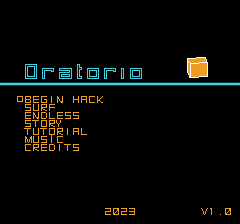
I had been playing with the idea of making a NES game where player actions create the soundtrack for a while. Then, in August 2022, NESMaker held its third Byte-Off competition, a kind of extended game jam for NESMaker developers. It was at that point where I drew inspiration from one of my favorite games of all time, Rez, and decided to make an homage to that game, and its spiritual successor, Child of Eden, on the NES. I collaborated with Jordan Davis (Space Raft, The Storied Sword) on an initial proof of concept demo for that competition and ended up winning what is called The Wombat Award for the weirdest, out-of-left-field entry. I then moved forward to finish the game since I was already in love with it.
What was development like?
Development was initially tricky for a number of reasons. I’m not very good at programming or music. Jordan handled the music, so I just had to rely on the NESMaker community to help me figure out how to make the programming work. Under the hood, what we’re essentially doing is running a unique composition constantly in the background but keeping two of the sound channels muted until a corresponding action occurs on screen – the player fires or an enemy gets hit, for instance. Anyway, long story short, that was the trickiest part. Once that was in place, it was actually a lot of fun to create pseudo-3D backgrounds representing “cyberspace” environments and designing the waves of enemies for each area.
What did you learn about yourself through this game?
Nothing I didn’t already know from the previous NES games I’ve developed. I suppose I further developed my love of messing around with pixel art. I’m no artist, but I have a strong aesthetic perspective, and this game, above all of my others, allowed me to cultivate and hone in on that a bit more.
What makes this game special?
While there are better pseudo-3D games on the NES, and certainly there are music/rhythm games, there is almost nothing else like Oratorio on the console. There is a game called Otocky for the Famicom Disk System. I learned about that project from Fei at Broke Studio after I was already developing Oratorio. It’s great! That’s more of a scrolling shooter, but has a similar concept of all player actions contributing to the soundscape. I recommend that people check that game out. In any case, Oratorio is nonetheless a very unique game on the system that combines unorthodox visuals, a unique interactive soundtrack, fast-paced and addicting shooting galleries, and a cyberpunk hacking narrative that engages with pressing issues of our times like global warming, the rapid extinction of species, and the increasing dominance of global tech conglomerates in our lives.
How does sound play a role in the game?
Hopefully this is already clear given my previous answers. Haha. Oratorio offers an interactive soundtrack. Players literally create the soundtrack through their actions, like firing their projectile and hitting enemies. It’s an almost visceral connection with the soundscape of the game and creates a multi-sensory experience that can easily slip into a state of flow. It’s like an interactive album.

What games influenced this one the most?
The biggest influences were Rez, Child of Eden, and Thumper. Of course, like any game, there are myriad other inspirations from across gaming history. Astute players may find some easter eggs or homages in there to other games.
Any fun stories or wild moments during development?
Nothing too crazy. But I guess this is a good moment to shout out the artist for the game’s NES box art. Matthew Warren Lee produced an original oil painting for the cover. The image used was literally a cleaned up scan from an actual painting. Matt is also the artist that did the cover for Orebody: Binder’s Tale. Honestly, I consider Matt’s cover paintings to be as vital as my designs or Jordan’s excellent and unique compositions.
Do you think preserving older gameplay mechanics in new games is important?
If a game mechanic works – if it remains engaging and, for lack of a better term, fun, then older gameplay mechanics should absolutely be preserved. And, of course, many are to this day, even if they’ve been iterated on over and over again.
But I would also argue that the opposite is true for retro development. That is, I think retro devs can and should look at what mechanics have developed over the entire history of games and think about how they might be implemented on older consoles. It’s an amazing time to be a player and/or a developer. We can go from the Atari to the NES to virtual reality in a single afternoon. And there’s so many talented people working all over the world.
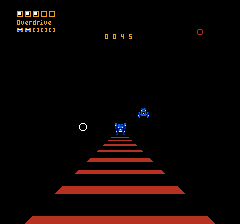
What's your favorite memory as a gamer?
That’s a tough one. Some special moments were receiving my first NES in 1990 (I know, pretty late), getting Ocarina of Time for Christmas in 1997, staying home from school to pick up Shenmue on day one for the Dreamcast. I could go on. I loved sleepless nights playing Diablo 2 and Counterstrike on my terrible PC. I remember buying an Xbox 360 in 2007 and grabbing BioShock and The Orange Box that Fall and just being in absolute heaven. Both BioShock and Portal remain experiential pillars in games for me. Most recently, my favorite memory has been slowly introducing my young son to video games. He’s already a Zelda fanatic!
Who will enjoy this game the most?
Retro players who enjoy unique homebrew experiences. Fans of rhythm action shooters like Rez. Music fans in general. At least, I hope they will enjoy it!
Bottom line, why must someone play this game?
It’s a unique rhythm action shooting game experience in the NES homebrew library, which is full of extremely unique and amazing work. From the gameplay to the visuals to its interactive soundtrack, it’s a singular experience that I hope every NES player appreciates. The game features four main Areas, each with its own audio track, that can be played in any order and an extra long final fifth Area with a unique track that becomes accessible once the other four are finished. There’s also an Endless mode with unique screens that provides additional challenges and experiences. It’s a robust, complete package.
How do you want this game to be remembered?
As a fun and engaging interactive music album – and as a game people can return to and zen out whenever they want.
What's next?
I’m currently developing a Game Boy game called Hammermill: An Orebody Story. It takes place in the same universe as Binder’s Tale but tells a very different story following a new set of characters. Players will explore the alien oceans of the planet Orebody in this action adventure title that combines simple ship combat with underwater exploration.
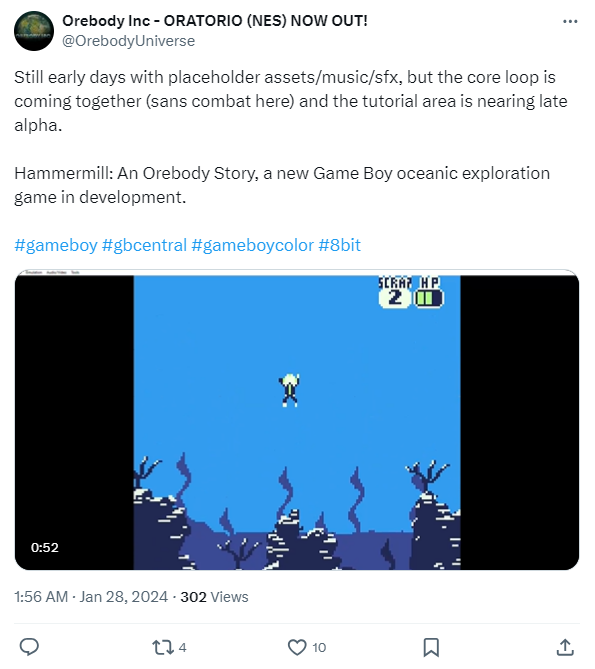
Anything else you'd like to add?
Thanks for the opportunity, Mega Cat Studios!
-
Indie Retro Homebrew Showcase Interview: Exploring the Magic of Witch n' Wiz!
Introducing our second feature in the Indie Retro Homebrew Showcase Interview series: Witch n' Wiz, crafted by the talented developer, Matt Hughson!
Get ready to fly into the enchanting world of Witch n' Wiz as we uncover insightful answers and delightful stories from its development journey. So, hold on to your wizard hats and join us for an adventure like no other!
Read down below on how our interview went!
How was your game born?
Witch n’ Wiz started life as a Pico-8 game. If you aren’t familiar with Pico-8, it is a modern game engine that mimics retro consoles (2D pixel art, limited colors, low resolution, etc). After that, I ported the Pico-8 game to the NES as part of the yearly “NESDev Coding Competition” and was awarded 2nd place! After that, I expand on the original concept dramatically, into what would become the Witch n’ Wiz you can play today.
What was development like?
Development was smooth! As I mentioned, it happened in stages which made the whole thing feel manageable. Start to finish, I think the game took about a year, from the first line of code, to sending the manual off to the printers.
The scope of the project was very intentional, from the NES Memory Mapper I chose (MMC1) to the number of levels (100) to the style of gameplay (single screen, puzzle). It was all just slightly bigger than my previous project for the NES, “From Below”.
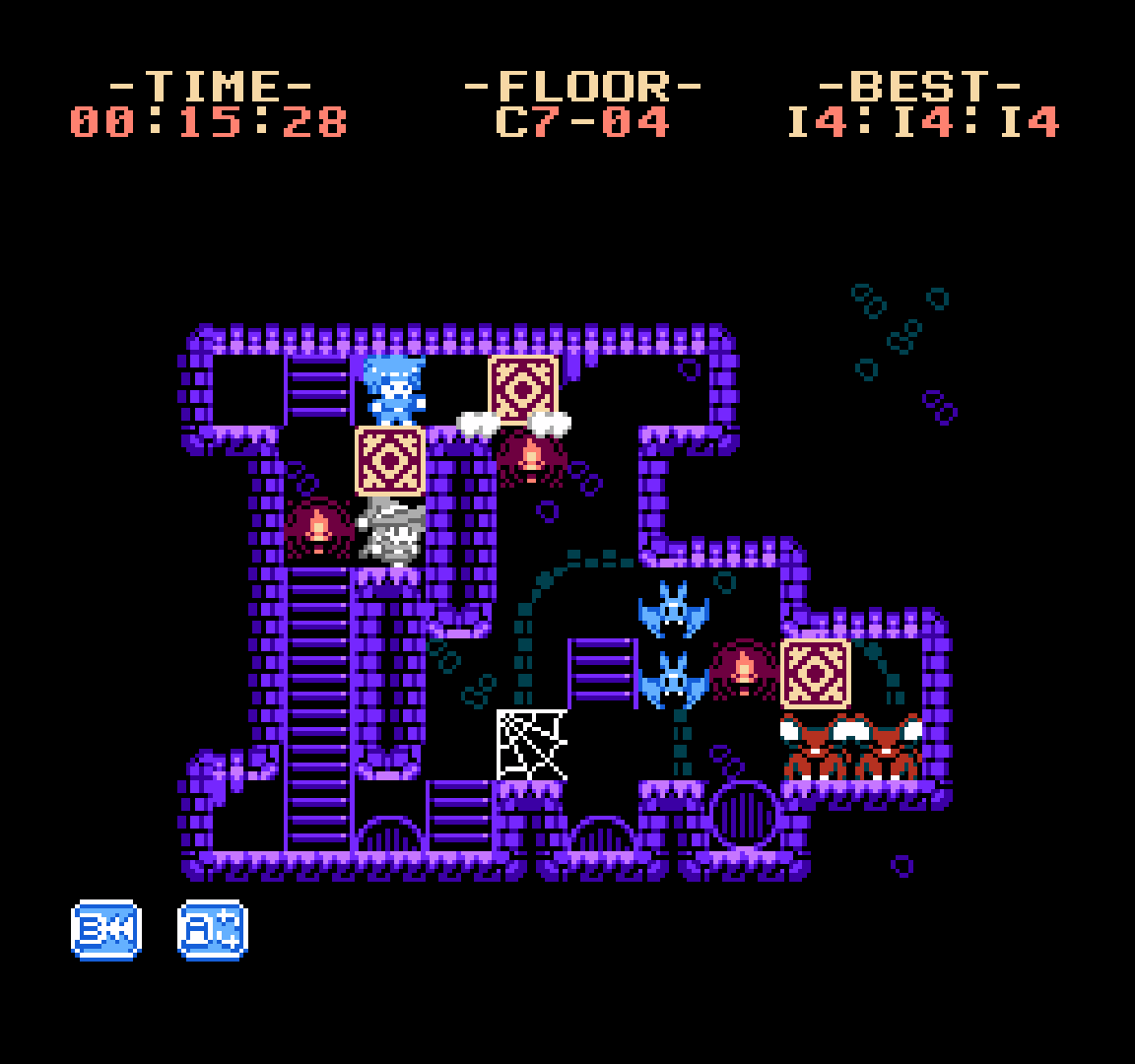
What did you learn about yourself through this game?
I would say that I found that my years spent working on commercial games helped a lot in terms of shipping a quality product. I work as a programmer in the game industry (Gears of War, Dying Light, etc) and the coding style of the NES is quite different from that. But the skill that I did find very transferable was just the ability to pull a lot of different resources and people together to create a cohesive, polished product.
What makes this game special?
Something I really like about Witch n’ Wiz is that the difficulty curve is a lot different than most retro puzzle games. Traditionally those games ramp up the difficulty more and more as the game goes on, often layering more and more mechanics as the player progresses.
In Witch n’ Wiz, the difficulty has peaks and valleys. Every chapter of the game introduces a new mechanic, but throws out all the previous mechanics, so the player gets a steady stream of new things to learn and master.
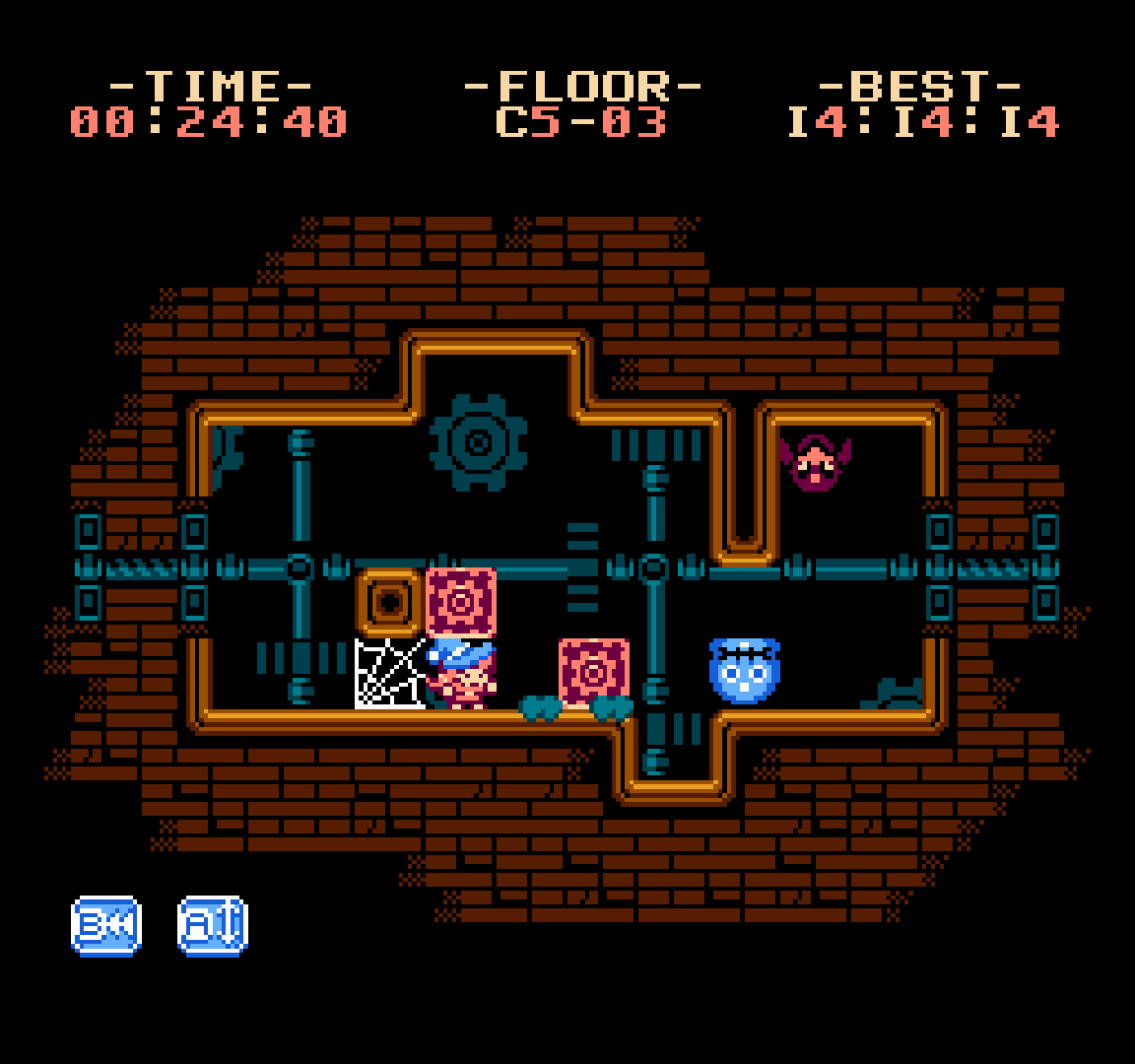
How does sound play a role in the game?
One of the biggest challenges for sound (in particular music) for this game is to make sure it doesn’t get annoying when you are sitting on the same screen for very long times (as the player attempts to think through a difficult puzzle). Tui, the composer for the project, did a fantastic job of keeping the music pushed into the background, but still creating memorable tunes.
What games influenced this one the most?
The core concept is heavily inspired by an old game called Catrap/Pitman which was probably most famous for their Game Boy version.
Any fun stories or wild moments during development?
A serendipitous event happened during the production of the physical version of the game. I was a huge fan of “Hand Draw Game Guides” by Philip Summers, and had asked if he would be interested in creating a guide for Witch n’ Wiz. He was too busy at the time preparing for what would become a viral success on Kickstarter. Months later, that Kickstarter launched just as I was finishing up my work on the physical part of Witch n’ Wiz. Unfortunately, Philip was forced to cancel the Kickstarter, and was left with “nothing to do”. It just so happened that right at that time is when I needed a poster/mini-guide for Witch n’ Wiz. We reconnected and he was able to come on board and deliver an amazing fold out poster with a mini-guide on the back, reminiscent of Nintendo Power.
Do you think preserving older gameplay mechanics in new games is important?
Not particularly. What I find more interesting is applying modern design principals to under used classic genres. I think Shovel Knight is a great example of this. Essentially taking Duck Tales and building it for today’s audience. Building modern games for retro console adds a further twist.
For example, Witch n’ Wiz has a whole suite of accessibility features which are very popular in games right now, but weren’t considered at all in the 80s and 90s. It’s fun to think of what an “accessible NES game” looks like. (See: Witch n' Wiz Accessibility (witchnwiz.com) for more info).
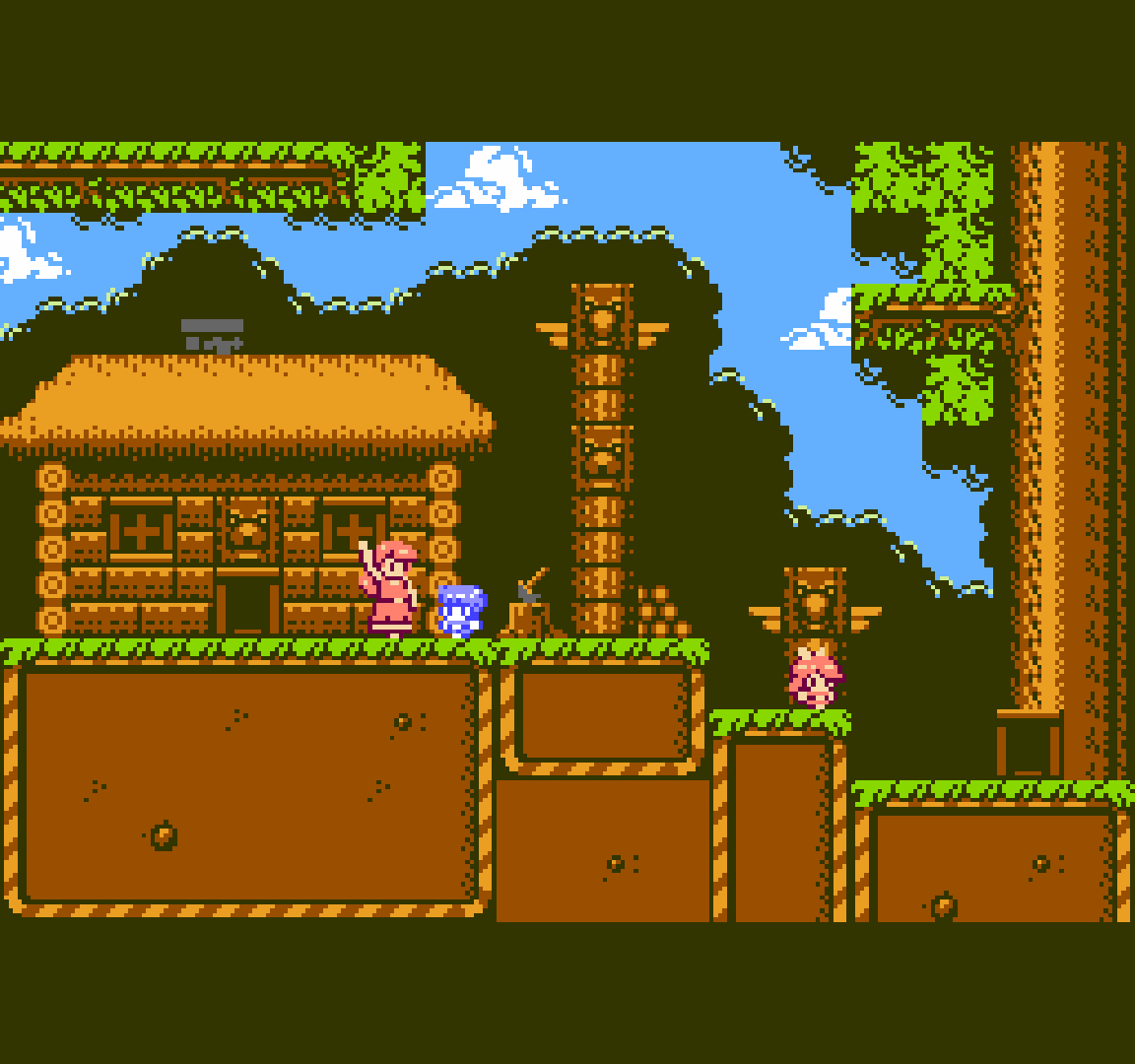
What's your favorite memory as a gamer?
Something that always sticks out to me is renting an NES and Contra from our local video store. It was before we owned an NES, and we would rent it on Friday and play it all day and night until it had to be returned on Sunday. It was a great time to be a kid!
Who will enjoy this game the most?
Folks who love classic puzzle games like Fire ‘n Ice, Solomon’s Key, Lolo, and similar.
Bottom line, why must someone play this game?
It was ranked as the #1 homebrew game of all time be RETRO! I’m not sure that’s deserved, but you should at least play it so you can say the game is overrated!
How do you want this game to be remembered?
As a polished experience start to finish, cartridge to cardboard. Everything in this package was meticulously crafted to be top quality, with excruciating attention to detail.
What's next?
I’m currently working on my next NES game, Super Sunny World: the ultimate love letter to the platformer greats of the 8-bit era. Jump, bump, and kick your way through 8 worlds of pixel-perfect platforming, cute characters, and exciting power-ups. Built from the ground-up for the NES!
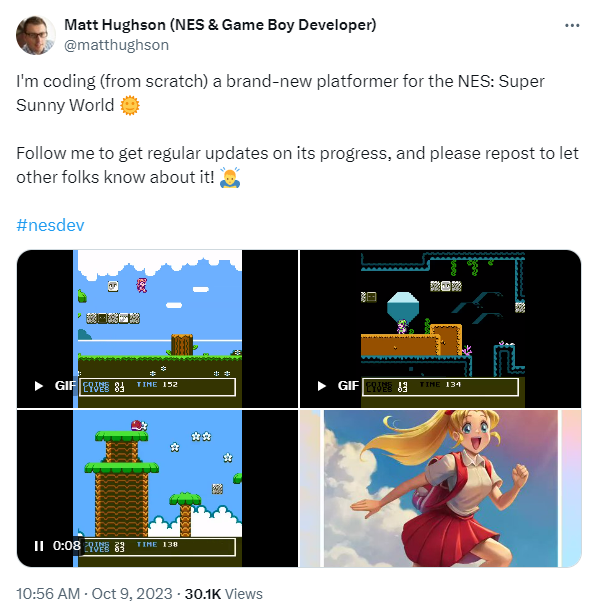
Anything else you'd like to add?
Thanks so much for checking out my games! If you are interested in seeing more homebrew, check out my “Homebrew Games Summer Showcase” on youtube, a 30-minute montage of over 100 homebrew games currently in development! It’s a great place to get a sense of what is out there.
-







